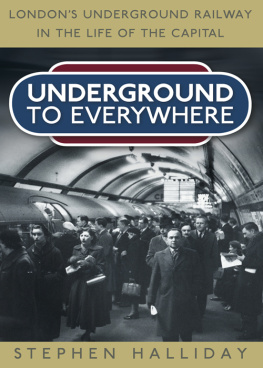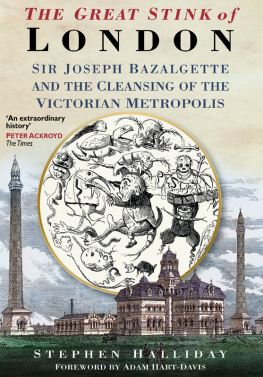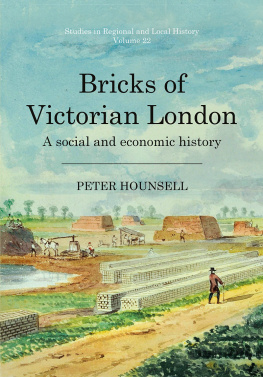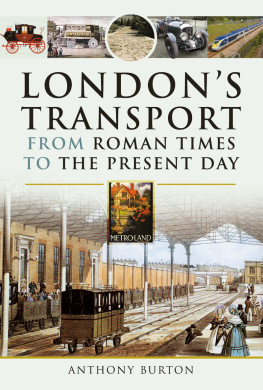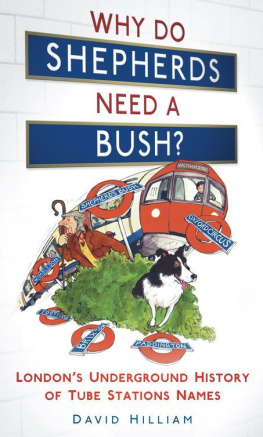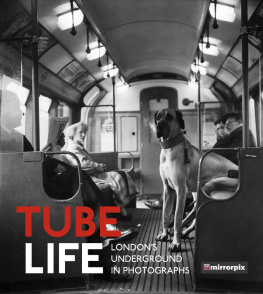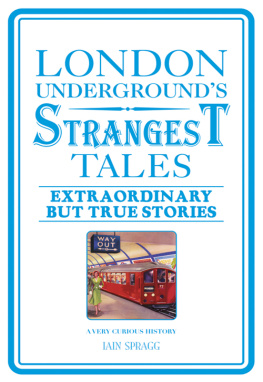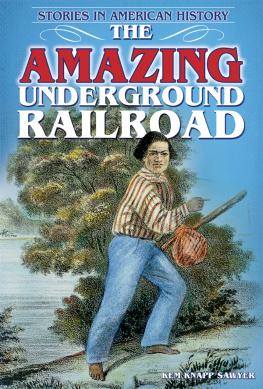C ONTENTS
by Maxwell Hutchinson
I first travelled on the London Underground in 1953. I was 5 years old. My parents brought me down from Grantham in Lincolnshire by the Flying Scotsman to wave at the queen the day after her coronation. It is a day that I will never forget.
I travelled on a main line steam train for the first time in my life, but that experience paled into insignificance compared with my childhood discovery of the London Underground. My father, who was an architect, had endeavoured to explain to a child precisely what the Underground was. Firstly, he explained, there were moving staircases called escalators. I failed utterly to understand what he was talking about despite the eloquence of his description. At the bottom of these strange staircases that went deep under the earths surface, there were trains travelling in tunnels like the famous tunnels to the north and south of Grantham on the East Coast Main Line but (as I thought) hundreds of feet under the surface of London. To the young mind, the whole idea seemed utterly preposterous.
When we arrived at Kings Cross, already soiled and a little weary from a hundred miles in the inadequate post-war carriages of the Flying Scotsman, we were carried along by the crowd still buoyed up by their enthusiasm for the coronation of our new young queen.
Descending the steps into the Underground, the first thing that struck me was the smell. It is still one of the systems mysterious trademarks that haunts me whenever I am away from London. There is nothing quite like the odour; it is unmistakable and lingers on the clothing with, for me, a mixture of abhorrence and affection. I am conscious that as a daily traveller on the Underground I must smell of the very place in what many consider to be an unpleasant way. On the other hand, I can wear this odour as a badge of honour. I dont own a motor car; I dont own a bicycle. For me, the Underground is my chauffeur-driven transport system. After the smell, I remember the intolerable crowds and the fact that everybody smoked. The escalator surpassed my wildest imaginings. It was with fear and trepidation that I stepped off the metal spikes at the top only to be transported down and down on a ride that was far better than anything I had experienced at a fairground. As for the trains themselves, frankly, I was terrified. The people, the dark, the snapping guillotine of the doors and the speed were like nothing I had ever experienced. Happily, that sense of wonderment, magic and respect has never vanished.
The London Underground system is one of the great wonders of the world. Londoners take it for granted. Infrequent British visitors boast of their command of the system and foreigners simply do not understand how it works. I have met many an American who has bought a ticket in Piccadilly Circus to travel to Leicester Square failing to understand their proximity and assuming, understandably, that the fact that both locations have stations means that they must be beyond walking distance.
At the beginning of the great endeavour beneath the streets of London, there was an ambition which seemed as impossible as supersonic flight, space travel, or the human genome project. Yes, it was proposed, trains could travel in tunnels to the very heart of the capital and carry willing commuters out to the sylvan glades of the suburbs. What heroism there was in the hearts and minds of the men who made this happen. When I explain to people at Baker Street or Great Portland Street that these stations were designed to accommodate steam trains, they cannot cope with the idea. Things are bad enough with electric power how in the name of reason could trains have been pulled by steam? but they were.
The economic, social and cultural history of the tube system seems to be cyclical. Success, failure, ambition, achievement, thrill, insolvency and personal ambition are woven into a 200-year history as rich and entertaining as any to be found.
Londoners never call it the Underground, quite simply, The Tube. This is a term of affection; an endearing way of describing a system which has, at various times, facilitated travel, encouraged enterprise and protected the population from the dangers of war. I would like to believe, but this may not be borne out by fact, that at least until the 1970s the London Underground was still considered by Londoners to be an efficient and beneficial contribution to their daily lives. It is sad indeed, at the beginning of the third millennium, that this awe-inspiring concoction of engineering achievements has become such a vile object of hatred. This reversal of public esteem has nothing whatsoever to do with the achievements, which are set out in this book. It is simply a product of neglect, under-investment and poor management.
In reading the gripping story so eloquently told in this book, I am struck by the role of certain individuals in the totality of the achievement. Will the American Bob Kiley, so ingeniously engaged by Mayor Ken Livingstone, match the achievements of his fellow American, Charles Tyson Yerkes? Will any of Leslie Greens neglected red tile tube stations ever be restored to their former glory? Harry Becks map of the Underground is my favourite graphic device of the twentieth century. Frank Pick, in choosing Charles Holden as his principal architect, gave this country some of our most important icons of the modern movement. Nikolaus Pevsner told me that Arnos Grove station was as important as any of the buildings of the Bauhaus I believed him, and when I saw it for myself, he was right (I actually prefer Southgate). Roland Paolettis role in engaging the countrys greatest architects to design the Jubilee Line stations continues this tradition of single-minded individuals who dedicated their time and energy to improving the transport conditions for Londoners.
It is sad that a younger generation of Londoners will not see the tube as I saw it for the first time. For them, it is unreliable, expensive, overcrowded, dirty and, with the rise in street crime, potentially dangerous. This book will, I am confident, re-kindle a sense of enthusiasm, respect and awe for the hidden glory of London Town.
Maxwell Hutchinson, July 2001
In writing this book I have incurred many debts, not least among my family and colleagues, whose opinions on Londons underground railways have often been canvassed by me at inconvenient times. My wife Jane, a midwife, my daughter Faye, a nurse in a Liverpool casualty department, and my son Simon, a soldier keeping the peace in one of the worlds troublespots, all have more stressful jobs than I do, but they have listened patiently to accounts of the more colourful characters and events that surrounded the building of the London Underground. These events included suicide, bankruptcy and the creation of what one commentator has called the largest art gallery in the world. My colleagues, especially Jane Fletcher and Lucia Ingham, have helped me by doing parts of my job that I should have been doing myself. My employers, Buckinghamshire Business School, allowed me the time to do the research and the staff of the Guildhall Library, the Metropolitan Archives and the British Newspaper Library at Colindale demonstrated the tact, which is such a necessary quality of librarians, in helping me to find original materials when I didnt always know what I was looking for. Simon Murphy of the picture library at the flourishing Londons Transport Museum in Covent Garden patiently found most of the pictures which the book contains. I was very fortunate in the latter stages of my research to make contact with Anthony Bull, whose clear and accurate memory of the Underground, supported by comprehensive diaries, stretches back to before the Second World War; David McKenna, who worked with Frank Pick before the war and Sir John Elliot in the difficult period of the 1950s; Paul Garbutt, who witnessed and described the dramas of the 1980s; and Richard Hope, editor of the

